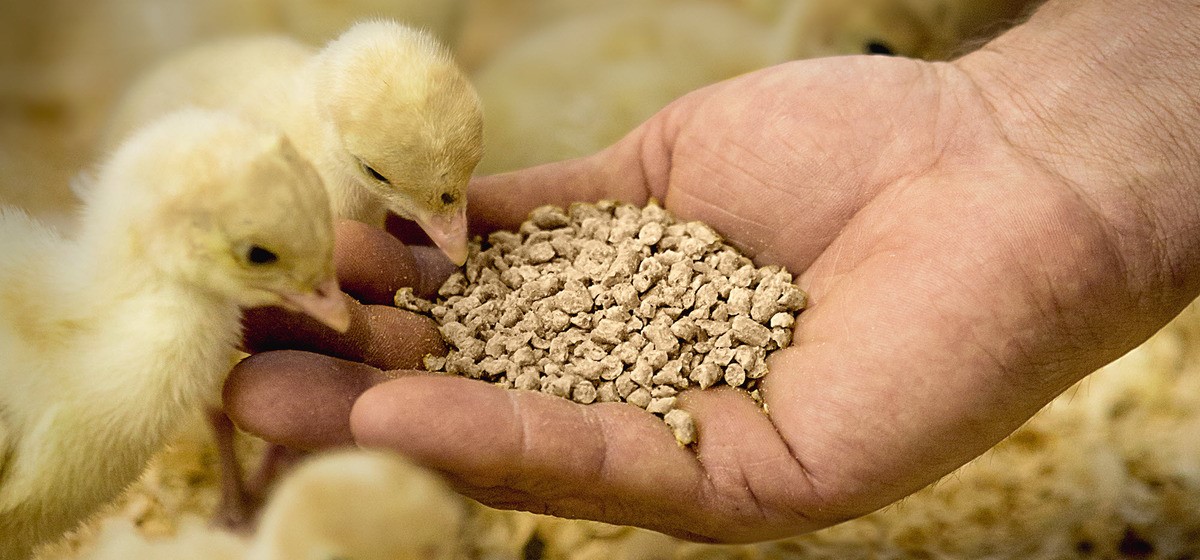
The Basics of Animal Nutrition: Understanding Essential Nutrients
Proper animal nutrition is critical for growth, reproduction, and overall health. This article explores the essential nutrients animals need, including carbohydrates, proteins, fats, vitamins, minerals, and water. It delves into their functions, sources, and how they contribute to an animal's well-being. The Q&A section at the end provides quick answers to common questions about animal nutrition.
🐶 Pet Star
13 min read · 28, Jan 2025

The Six Essential Nutrients for Animals
Animals require six major categories of nutrients to sustain life: carbohydrates, proteins, fats, vitamins, minerals, and water. Each nutrient plays a unique role in maintaining overall health and functionality.
1. Carbohydrates
Carbohydrates are the primary source of energy for most animals. They are made up of sugars, starches, and fibers, which are broken down into glucose during digestion.
- Functions: Provide energy for daily activities, support digestion (fiber), and maintain gut health.
- Sources: Grains like corn, oats, and barley; forages such as hay and pasture grass.
- Deficiency: A lack of carbohydrates can lead to energy deficiencies, reduced growth, and weight loss.
2. Proteins
Proteins are essential for building and repairing body tissues. They are composed of amino acids, which are the building blocks of life.
- Functions: Support muscle development, repair tissues, and produce enzymes and hormones.
- Sources: Soybean meal, fish meal, eggs, milk, and legumes.
- Deficiency: Symptoms include poor growth, weakened immune response, and reduced reproductive performance.
3. Fats
Fats are a concentrated source of energy and play a crucial role in cell structure and hormone production. They also enhance the absorption of fat-soluble vitamins.
- Functions: Provide energy, protect internal organs, and maintain healthy skin and coat.
- Sources: Vegetable oils, fish oils, and animal fats.
- Deficiency: Leads to poor coat quality, weight loss, and impaired reproduction.
4. Vitamins
Vitamins are organic compounds that animals require in small amounts for various metabolic functions. They are divided into fat-soluble (A, D, E, K) and water-soluble (B-complex and C) vitamins.
- Functions: Support vision, immune health, bone strength, and energy metabolism.
- Sources: Fresh forage, supplements, and fortified feeds.
- Deficiency: Each vitamin deficiency causes specific issues, such as night blindness (Vitamin A deficiency) or weak bones (Vitamin D deficiency).
5. Minerals
Minerals are inorganic elements essential for structural support and various biochemical processes. They are divided into macrominerals (e.g., calcium, phosphorus) and trace minerals (e.g., zinc, selenium).
- Functions: Strengthen bones and teeth, aid nerve function, and regulate enzymes.
- Sources: Mineral supplements, salt licks, and natural feeds like legumes and grains.
- Deficiency: May lead to weak bones, growth abnormalities, or reproductive issues.
6. Water
Water is arguably the most important nutrient for animals. It is involved in nearly every physiological process, including digestion, temperature regulation, and waste elimination.
- Functions: Hydrates the body, aids in nutrient absorption, and regulates body temperature.
- Sources: Clean drinking water, fresh fruits, and certain feeds.
- Deficiency: Dehydration can result in lethargy, organ failure, and even death in severe cases.
Balancing the Diet for Optimal Health
To ensure animals receive adequate nutrition, their diets must be balanced. This involves providing the right proportions of all six essential nutrients based on the animal's species, age, activity level, and purpose (e.g., production or companionship). For instance:
- Herbivores require fiber-rich diets primarily composed of forages and roughages.
- Carnivores thrive on protein- and fat-rich diets derived from animal sources.
- Omnivores need a combination of plant- and animal-based foods.
Factors Affecting Animal Nutrition
Several factors influence the nutritional needs of animals, including:
- Age: Young animals require higher protein and energy for growth, while older animals may need fewer calories.
- Activity Level: Active animals need more energy, while sedentary animals require fewer calories to avoid obesity.
- Health Status: Sick or recovering animals often benefit from specific dietary adjustments.
- Reproductive Stage: Pregnant and lactating animals have increased nutrient demands.
- Environmental Conditions: Extreme temperatures can influence energy and water requirements.
Common Feeding Mistakes
- Overfeeding or Underfeeding: Both can lead to health problems like obesity or malnutrition.
- Ignoring Species-Specific Needs: Feeding the wrong type of diet can harm an animal’s health.
- Poor Quality Feed: Contaminated or low-quality feed can lead to illnesses.
- Inconsistent Feeding Schedules: Regular feeding times help maintain optimal digestion and metabolism.
Importance of Professional Guidance
Working with a veterinarian or animal nutritionist ensures that animals receive appropriate diets tailored to their needs. Regular health check-ups can identify any nutritional deficiencies early, allowing for timely intervention.
Q1: What are the signs of poor nutrition in animals?
Ans) Signs include weight loss, dull coat, lethargy, poor growth, and reduced productivity (e.g., fewer eggs or less milk).
Q2: How much water do animals need daily?
Ans) Water requirements vary by species, size, and activity level, but animals typically need water equivalent to 5-10% of their body weight per day.
Q3: Can animals get all their nutrients from a single type of feed?
Ans) No, a single type of feed rarely provides all essential nutrients. A balanced diet with a mix of feeds is necessary.
Q4: How can I ensure my livestock gets enough minerals?
Ans) Provide mineral blocks or supplements and ensure their diet includes mineral-rich feeds like legumes and grains.
Q5: Why is fiber important for herbivores?
Ans) Fiber aids in digestion, maintains gut health, and provides energy through fermentation in the digestive system.
Similar Articles
Find more relatable content in similar Articles

Social Media for Pets: Turning Your Pet into a Digital..
From playful puppies to charis.. Read More

Virtual Vet Visits: Are Online Consultations Reliable?..
As pet healthcare embraces dig.. Read More

Composting Pet Waste: A Greener Way to Clean Up...
As pet ownership continues to .. Read More

Pets and Mental Health: The Science Behind Emotional H..
Discover the profound impact o.. Read More
Explore Other Categories
© 2024 Copyrights by rPets. All Rights Reserved.